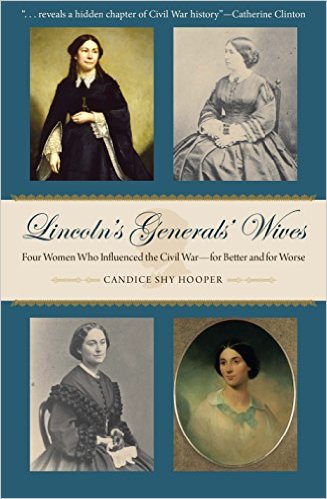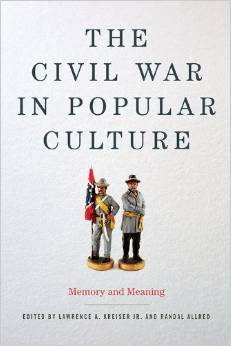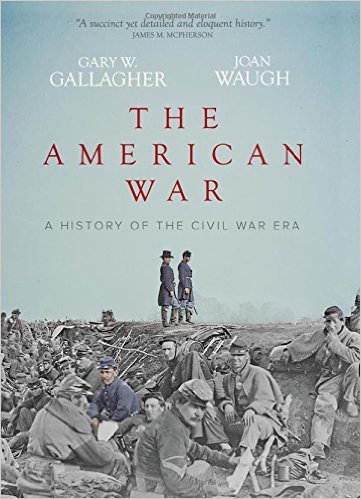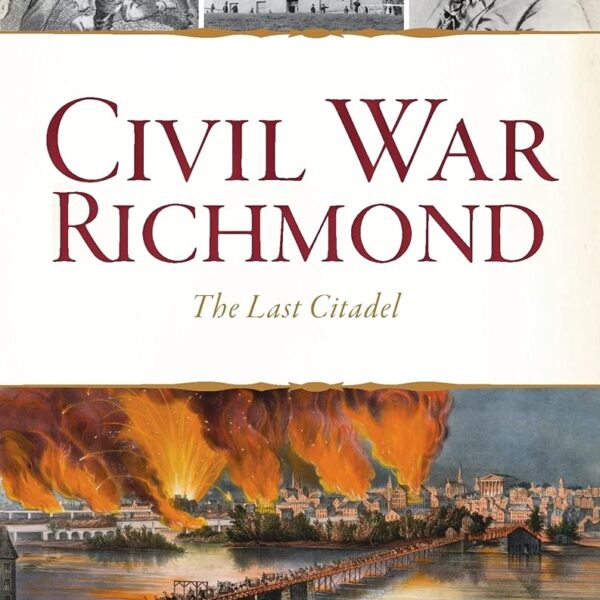On a Great Battlefield: The Making, Management, and Memory of Gettysburg National Military Park, 1933-2013 by Jennifer M. Murray. University of Tennessee Press, 2014. Cloth, ISBN: 978-1621900535. $49.00.
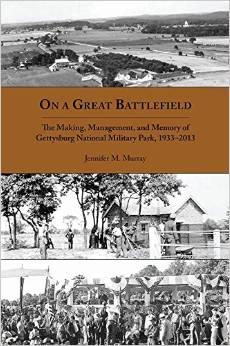 How many people, when they walk in the footsteps of soldiers on one of the many battlefield parks in the United States, think about the battles—not the military battles, but the preservation battles—that made that park possible? Most do not. They will often stop at the visitor center for a map, maybe take a guided tour, and delve into the tactics and personalities of the battle and its combatants. Jennifer M. Murray wants visitors to think beyond the battlefield as a site of fighting and suffering and consider that battlefield as a park over time. She has written an important history of one of America’s most visited and cherished parks, Gettysburg National Military Park. Murray’s matter-of-fact tone and consistent use of a full array of relevant primary sources build a convincing argument that more people should pay attention to how the battle has been memorialized over the stretch of 150 years. This is a good read, but she may have made her chronicle stronger had she drawn upon the rich language of military history and captured the messy, brutal, triumphant, and uncertain story.
How many people, when they walk in the footsteps of soldiers on one of the many battlefield parks in the United States, think about the battles—not the military battles, but the preservation battles—that made that park possible? Most do not. They will often stop at the visitor center for a map, maybe take a guided tour, and delve into the tactics and personalities of the battle and its combatants. Jennifer M. Murray wants visitors to think beyond the battlefield as a site of fighting and suffering and consider that battlefield as a park over time. She has written an important history of one of America’s most visited and cherished parks, Gettysburg National Military Park. Murray’s matter-of-fact tone and consistent use of a full array of relevant primary sources build a convincing argument that more people should pay attention to how the battle has been memorialized over the stretch of 150 years. This is a good read, but she may have made her chronicle stronger had she drawn upon the rich language of military history and captured the messy, brutal, triumphant, and uncertain story.
This book uses a chronological format with emphasis upon key moments in the park’s past. Murray in short order summarizes the pre-National Park Service years in which the citizens of Gettysburg and then the War Department collected lands and established a battlefield park for veterans, their families, and others to traverse and remember the three days of fighting. Murray then focuses the rest of the book upon NPS management, dating from 1933 when President Franklin Roosevelt signed an executive order to bring military parks, plus historical sites and some natural sites, under NPS control.
What are some of the key stories Murray tells? First, she establishes that over the course of decades, the Park Service focused its interpretation upon Pickett’s Charge as the High Water Mark for the Gettysburg battle and even the Civil War itself. This approach favored reconciliation, highlighting the coming together of the opposing sides without acknowledging slavery as the cause of the war or holding up the rights of Black Americans in the aftermath of the war. Landscape restoration at Gettysburg in the 1940s cleared vistas at Pickett’s Charge. The auto tour ended with this part of the battle. Visitors could walk from this last auto stop and see the cyclorama, the 1883-1884 circular mural which captured the climax of the Confederate charge on July 3, 1863. A new 1962 visitor center, which architect Richard Neutra designed, let visitors immerse themselves in a restored cyclorama experience, complete with a sound and light show. People could walk out onto the observation deck of the new building and see the fields where the third day’s fighting occurred and then walk the new High Water Mark walking tour. Pickett’s Charge, a failed Confederate attack, ironically remained through the 1990s the primary storyline for the only Civil War battlefield park on northern soil and where the Union won a decisive victory.
Murray also describes how the local community stalled and even obstructed attempts to improve conditions at the battlefield park. The Licensed Battlefield Guides, established under the War Department, fought placement of waysides or markers because these signs might encourage visitors to tour on their own instead of hiring a guide. Local business owners vociferously opposed a proposal in the 1970s to move the park’s visitor center north of town, worried that their own establishments would lose business. They also fought against a large dining area and shop in the new 2008 Gettysburg Museum and Visitor Center, a building they viewed as an additional threat to their livelihoods. The local government let economics trump battlefield authenticity when it enthusiastically embraced the placement of a 307-foot observation tower on the park’s boundary.
Perhaps one of the most surprising stories Murray tells is about the bungled management of the National Park Service itself. A rotating list of superintendents meant that each had his own priorities, and those priorities changed with each new superintendent. Between 1989 and 1994, for example, the park had three different superintendents. When Jose Cisneros assumed the position in 1990, he threw out the 1982 General Management Plan, intended to guide park development for 20 years or more. He instead pursued a Memorial Landscape approach that deemphasized the 1863 battlefield and concentrated upon the memorials and monuments placed after the fighting. This proposal, defended by NPS Director Roger Kennedy despite its divergence from the park’s legislated mission, eventually died with a new superintendent.
Murray tells these stories and more in a straightforward style that include the facts but not the dynamism of these situations. Perhaps the most notable example is her treatment of superintendent John Latschar, who between 1994 and 2009 turned Gettysburg around. He yanked out the single-minded High Water Mark interpretive focus and installed a nuanced conception that analyzed Gettysburg within the larger framework of the causes and consequences of the Civil War. He successfully addressed opposition from the local community and Congressional representatives and won approval to use a public-private partnership to build a new museum and visitor center. He did not quiver in the face of daunting odds for this unique answer to the park’s stalled interpretive and preservation goals.
Murray does note that she interviewed Latschar. Latschar is a bigger than life personality, but Murray does not reveal his relevant character traits in her distillation of this most recent and essential period of the park’s history. Other superintendents and major actors read equally as flat. Here is a book that has an engaging and surprising story to tell, but Murray does not choose to borrow from the language of military history to capture the drama and suspense. She even confounds it with repetitive sections in chapters and unnatural breaks in subjects within those chapters. But in the end, the history of Gettysburg National Military Park shines through as a telling example of why visitors need to pay heed to a park’s preservation history, not just its military battles.
Joan M. Zenzen is an independent historian based in Maryland. She has written four histories of battlefield parks, including Battling for Manassas: The Fifty-Year Preservation Struggle at Manassas National Battlefield Park (1997).

